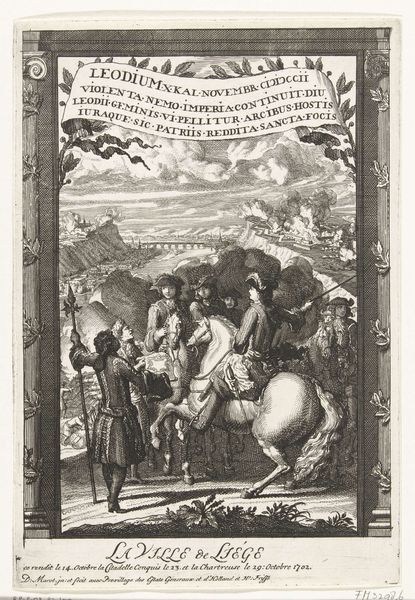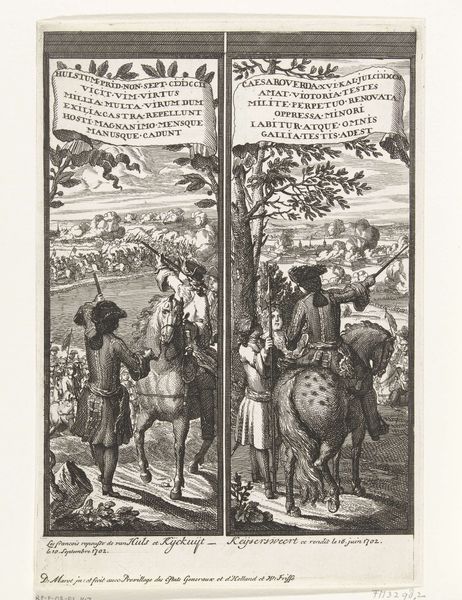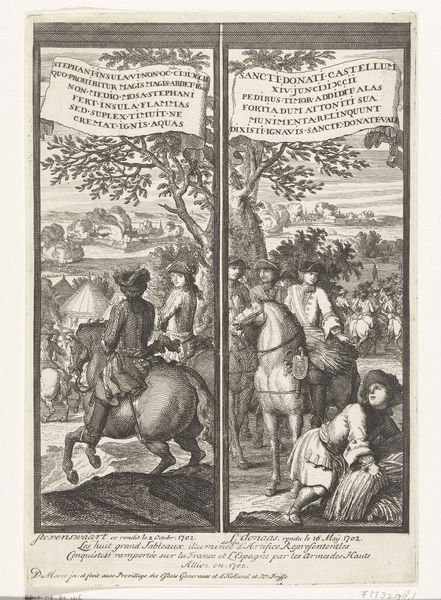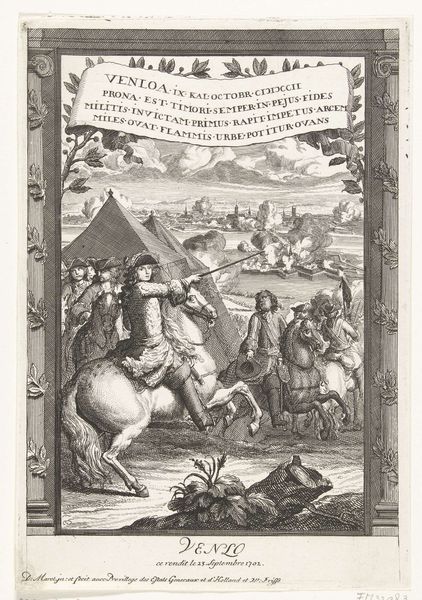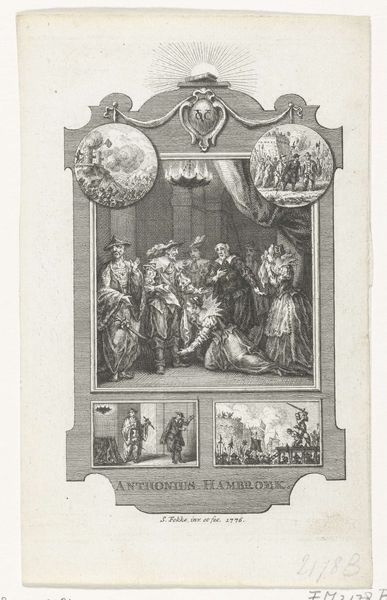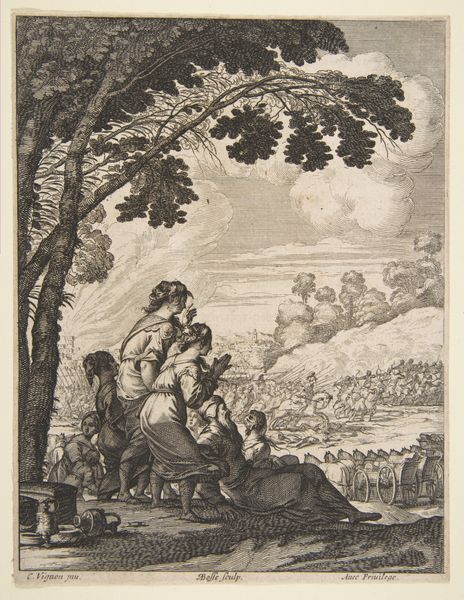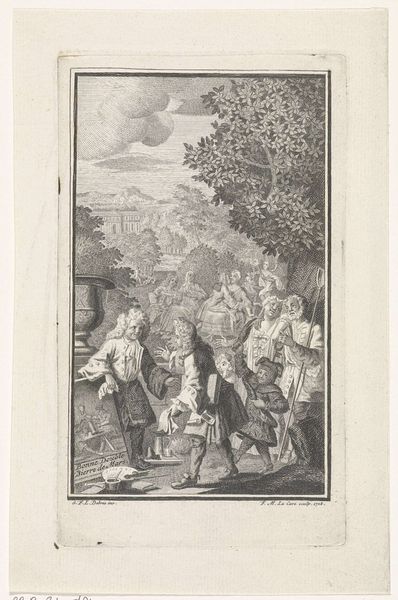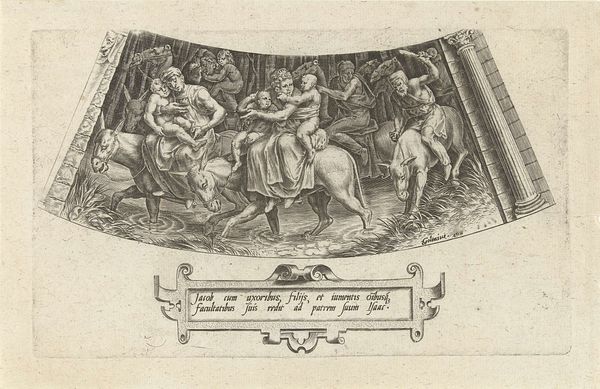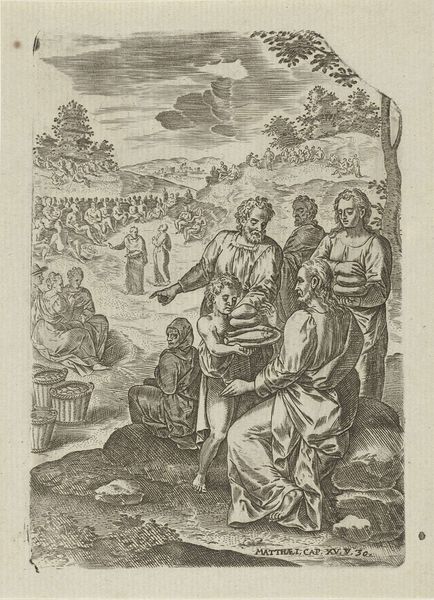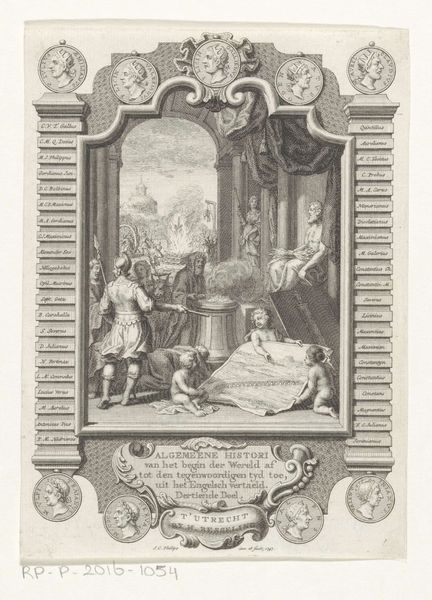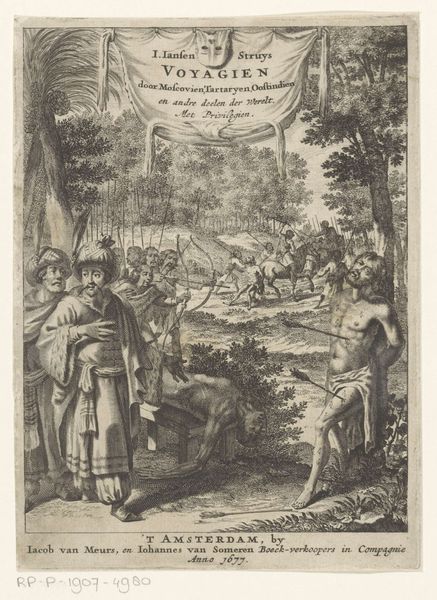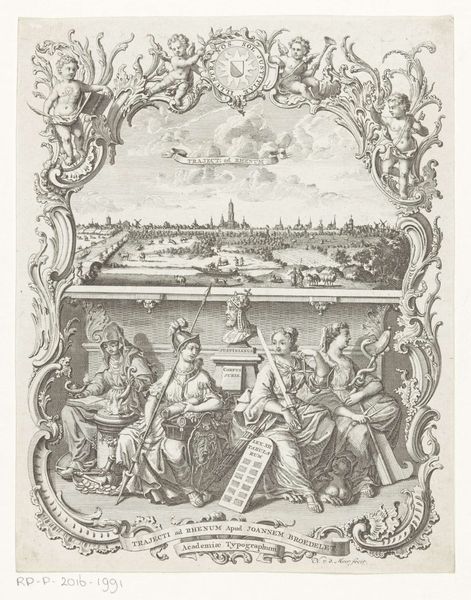
print, engraving
#
baroque
# print
#
landscape
#
line
#
history-painting
#
engraving
Dimensions: height 272 mm, width 185 mm
Copyright: Rijks Museum: Open Domain
Curator: Here at the Rijksmuseum, we have "Paneel met de overwinning te Roermond, 1702", a print from 1702, by Daniël (I) Marot. The work memorializes a specific historical event. What's your first impression of this engraving? Editor: It strikes me as meticulously detailed yet strangely detached. There's a landscape receding into the distance, but the figures in the foreground are stiff, almost posed. It feels… staged. Curator: That "staged" feeling is deliberate, typical of Baroque art which often used elaborate compositions to convey power and authority. This piece specifically commemorates the capture of Roermond. Consider the context of the War of the Spanish Succession. Editor: Right, this wasn't just about territorial gain; it was about projecting power and legitimizing rule. Who are those figures? Are they the conquering heroes? Curator: Precisely. Note the central figure on horseback, presumably a high-ranking commander, presented almost heroically, with the landscape, indicating the siege of the town, relegated to the background. The Latin inscription adds a layer of propaganda. Editor: So the image becomes a political statement, celebrating victory and reinforcing dominance. But doesn't that lack of emotional connection make it a bit... cold? Curator: That “coldness”, as you describe it, reflects a particular visual language designed to communicate certain ideas about control, order, and triumph. It's a highly stylized depiction of warfare, filtered through a specific ideological lens. The victory itself is carefully crafted to impress. Editor: Thinking about it, the printmaking medium itself lends to that. This isn't the chaos and brutality of war; it's a carefully disseminated message, reproduced for a wider audience. Curator: Exactly. It showcases the power of print as a medium for spreading political messages and constructing narratives. Marot doesn't just show a victory; he disseminates an idealized image of it. Editor: Looking closely at this now, one could see that those small-scale historical works offer a unique perspective on how power was visualized and consumed in early modern Europe. Thank you for bringing the importance of historical context into focus! Curator: Thank you. Indeed, even in its apparent detachment, the print reveals much about the politics of its time and the power of art to shape historical narratives.
Comments
No comments
Be the first to comment and join the conversation on the ultimate creative platform.
